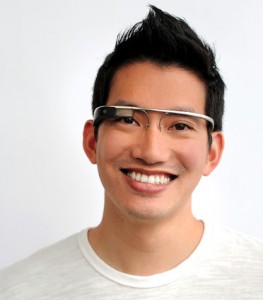Google patent hints at monetizing Glass, tracking user engagement


Google has been granted a patent which may give us a glimpse at the future of Google Glass eye-tracking sensor use -- in the form of advertising.
In the patent issued by the United States Patent and Trademark Office (USPTO), number 8,510,166, Google documents how the eye tracker could be used for a "pay per gaze" system. Sensors in a headset track how an eye moves, and if a user looks at an advert, the advertiser is charged.
The patent summary states:
"The server receives scene images from the head mounted gaze tracking device which captures external scenes viewed by a user wearing the head mounted device. The server also receives gaze direction information from the head mounted gaze tracking device. The gaze direction information indicates where in the external scenes the user was gazing when viewing the external scenes.
An image recognition algorithm is executed on the scene images to identify items within the external scenes viewed by the user. A gazing log tracking the identified items viewed by the user is generated."
The filing states that "advertisers are registered for pay per gaze billing" and "advertisers are charged based upon whether a user actually viewed their advertisement." In order to detect whether a headset user's eyes simply flicked across the projection or whether they chose to view the advertisement properly, the patent says that a "machine-readable storage medium" detects when a person's gaze remains in the same direction for a certain period of time.
Google says that under a pay per gaze advertising scheme, advertisers are charged based upon whether a user actually engaged with an advertisement. However, the tech giant goes further -- stating:
"Pay per gaze advertising need not be limited to on-line advertisements, but rather can be extended to conventional advertisement media including billboards, magazines, newspapers, and other forms of conventional print media. Thus, the gaze tracking system described herein offers a mechanism to track and bill offline advertisements in the manner similar to popular online advertisement schemes."
Perhaps marginally creepy, but the patent also says that for an additional fee, "the inferred emotional state" of the user when viewing an advertisement can be provided -- useful if a business has launched a shocking or controversial campaign.
In order to protect individual privacy, the patent application says "personal identifying data may be removed from the data and provided to the advertisers as anonymous analytics." In addition, users "might" be allowed to opt-out of pay per gaze advertising.
Originally filed in 2011, the patent does not mention Google Glass by name, the patent does include glasses -- with "side arms engage the ears of the user, a nose bridge that engages a nose of the user, and lenses through which the user views the external scenes" -- which fits the Google Glass product as a description.